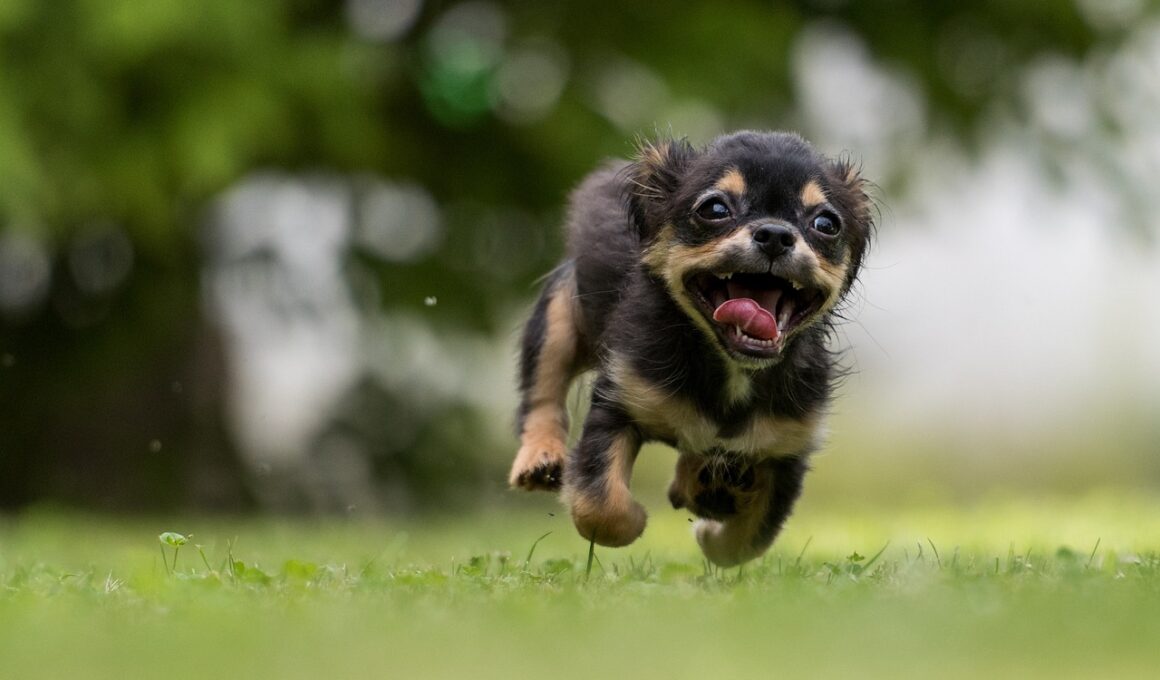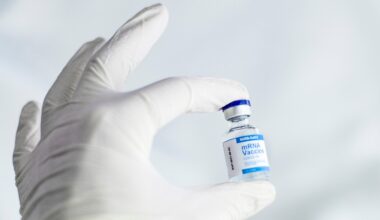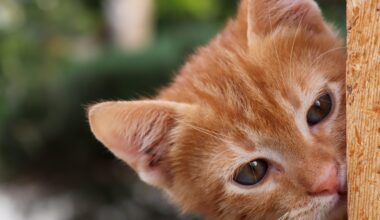Drone Photography and Dogs: Capturing Dynamic Aerial Shots
Drone photography has revolutionized the way we capture images, especially in pet photography. By incorporating drones, photographers can achieve unique angles and perspectives that simply weren’t possible with traditional methods. When focusing on dogs, aerial shots can create dynamic compositions that showcase their playfulness, agility, and beauty. Using a drone permits photographers to highlight not only the dogs themselves but also the landscape around them. This is particularly engaging when the dog is in action, running through parks, beaches, or open fields. To ensure the dog remains safe, it’s essential that the photographer considers a few factors. For example, avoid crowded areas where a dog might become distracted or anxious. Taking the time to familiarize the dog with the drone sound can help as well. Drones are becoming more accessible in terms of technology and budget, making this form of photography achievable for many dog owners. Therefore, when considering outdoor settings, it’s beneficial to plan the shoot from a distance to capture candid and natural behaviors in your furry friends.
Among captivating dog photography aspects, there are some trends worth exploring. One emerging trend is the use of vibrant colors to attract attention. Bright collars, accessories, or settings can enhance the visual aesthetics of drone photographs. Additionally, photographers are experimenting with creative geographical locations. Urban landscapes juxtaposed with dogs in action can create compelling stories. Another trend involves capturing moments during dog sports or agility events. These environments provide excellent opportunities for dynamic shots that truly exhibit the dog’s energy and skills. Special attention should be given to editing techniques as well. Many photographers are leaning towards bold, contrasting styles to highlight the dog’s features against various backgrounds. Of course, capturing such images requires more than just pointing and shooting. A proficient understanding of dog behavior plays a crucial role. Predominantly, knowing when the dog will leap or run is essential for timing the shot just right. Many professional photographers have adopted this approach, capturing breathtaking moments that resonate emotionally with viewers. This convergence of trends signifies a shift towards more playful and imaginative dog photography.
Essential Gear for Aerial Dog Photography
Capturing high-quality aerial dog photography hinges on essential gear. Firstly, investing in a good drone is crucial, and models with high resolution and stable video features are recommended. Popular choices might include brands like DJI or Parrot, known for reliability and ease of use. Complementing the drone, a gimbal stabilizer is also essential to lessen shaky footage, particularly when photographing active dogs. To optimize photo quality further, it’s important to choose the right camera settings. This includes utilizing a high shutter speed to freeze motion, especially in dynamic situations. Additionally, lenses with wide apertures will allow for better focus on the dog while blurring the background effectively. Photographers should also consider using filters, which help enhance colors and contrast in aerial shots. Apart from hardware, a solid knowledge of drone regulations is vital. Each region may have specific rules regarding drone operation, especially in natural environments where wildlife could be disturbed. Thus, one should always stay informed and operate drones responsibly to ensure safety for both dogs and their surroundings.
Safety is paramount when engaging in dog photography, especially with drones in play. Ensuring the comfort of the dog is essential. This entails introducing the drone gradually, allowing the dog to familiarize itself with the noise and movement and thereby reducing anxiety. Additionally, it’s advisable to choose open spaces for drone flying, away from potential stress factors, such as other animals or excessive human traffic. Close monitoring of the dog’s reactions during the shoot can prevent unwanted stress or fear about the drone’s presence. Always have treats or toys handy to engage the dog and help distract them from any commotion. A leash may be ideal when starting, but it’s crucial to ensure the dog can roam freely once comfortable. If the dog displays signs of unease, pausing to reset the environment could be beneficial. Calm communication between the photographer and the pet establishes a mutual understanding that encourages playful behavior. This approach ultimately ensures delightful moments can be captured without causing any distress to the furry subjects during a shoot. Experience and knowledge will build trust, leading to fantastic results.
Post-Processing Tips for Stunning Results
Post-processing is a crucial step in enhancing aerial dog photographs. Once the photos have been captured, utilizing editing software such as Adobe Lightroom or Photoshop can transform the images dramatically. The first step often revolves around correcting exposure and contrast to ensure the image pops visually. Adjusting brightness levels can help bring the dog into sharper focus, especially against contrasting backgrounds. Besides color correction, cropping images can improve composition by removing distractions on the edges. This will direct the viewer’s attention to the dogs’ personalities and actions. Adding clarity can also highlight details such as fur texture while sharpening images can refine edges for crispness. Other effects, like vignette or selective blurring, can emphasize the subject while creating a dramatic change in mood. It’s also beneficial to experiment with different filters or presets to establish a consistent aesthetic unique to their work. Additionally, sharing post-processed images on platforms such as Instagram and Pinterest can provide inspiration to other photographers and dog lovers alike. This dissemination of creativity can invigorate interest in dog photography within the community.
As drone technology evolves, the possibilities in dog photography continue to expand. Photographers are finding innovative ways to integrate drones into their sessions. This evolution allows for creativity in storytelling and showcases the profound bond between dogs and humans. An emerging trend is capturing special moments like birthdays, trips to the park, or competitive events from an aerial angle. These images are not only visually stunning but evoke emotions that resonate with audiences emotionally. Furthermore, drone photography opens new doors for interactive videos that appeal to younger audiences. By creating engaging content, dog owners can share remarkable stories surrounding their pets, expanding the community and fostering connections. Additionally, collaborating with local brands or shelters can elevate the visibility of dog photography. Partnering with such organizations offers unique contexts for showcases, building interest through purpose-driven narratives. Online contests may also help spot emerging talents and trendsetters in dog photography. All these components underline the growing popularity of aerial photography in canine contexts, signaling an exciting future where dogs can be captured in bold, new expressions through the lens of a drone.
Future Trends in Dog Photography
Looking ahead, additional trends in dog photography alongside drone capabilities are likely to emerge. Innovations in photography technology will continue to enhance the workflow. For instance, 360-degree cameras and live-streaming options may become mainstream, allowing immediate sharing of dynamic dog moments in real time. Further integration of software utilizing AI capabilities could streamline editing, providing suggestions for optimal compositions before shots are even taken. This advancement assists photographers by making their workflows less tedious and invites playful experimentation during shoots. Moreover, with the rise of social media influence, there may be heightened demand for niche photography styles that attract attention on various platforms. Photographers could develop tailored techniques targeted at different dog breeds, showcasing their unique traits beautifully. Additionally, outdoor events dedicated to dog photography could attract significant attention, fostering networking opportunities and building bonds among enthusiasts. Overall, the excitement surrounding dog photography continues to grow, propelled by technological advancements and social trends. Emerging artists will undoubtedly explore innovative techniques to captivate audiences while contributing to dog-friendly communities through creative expressions.



